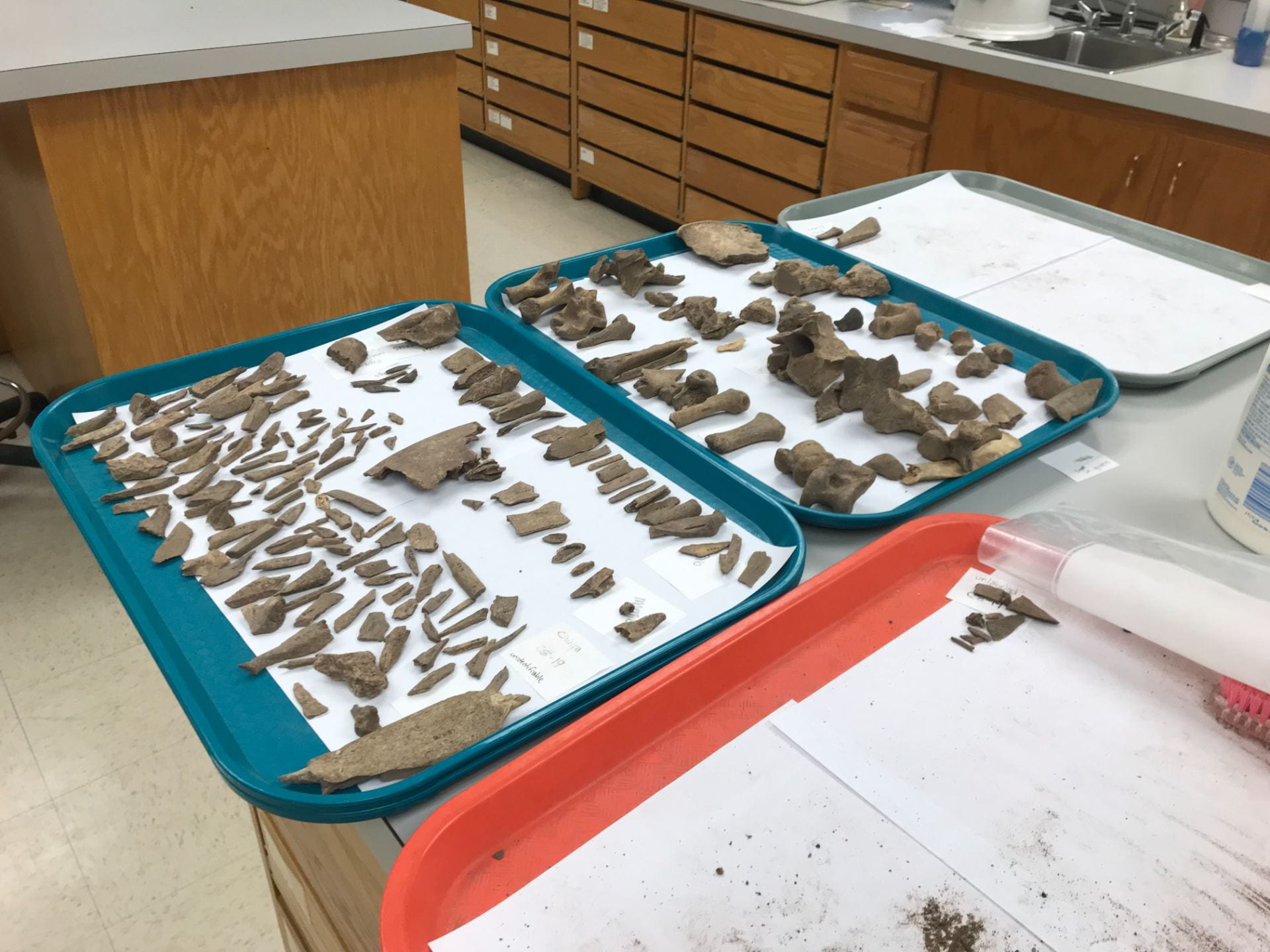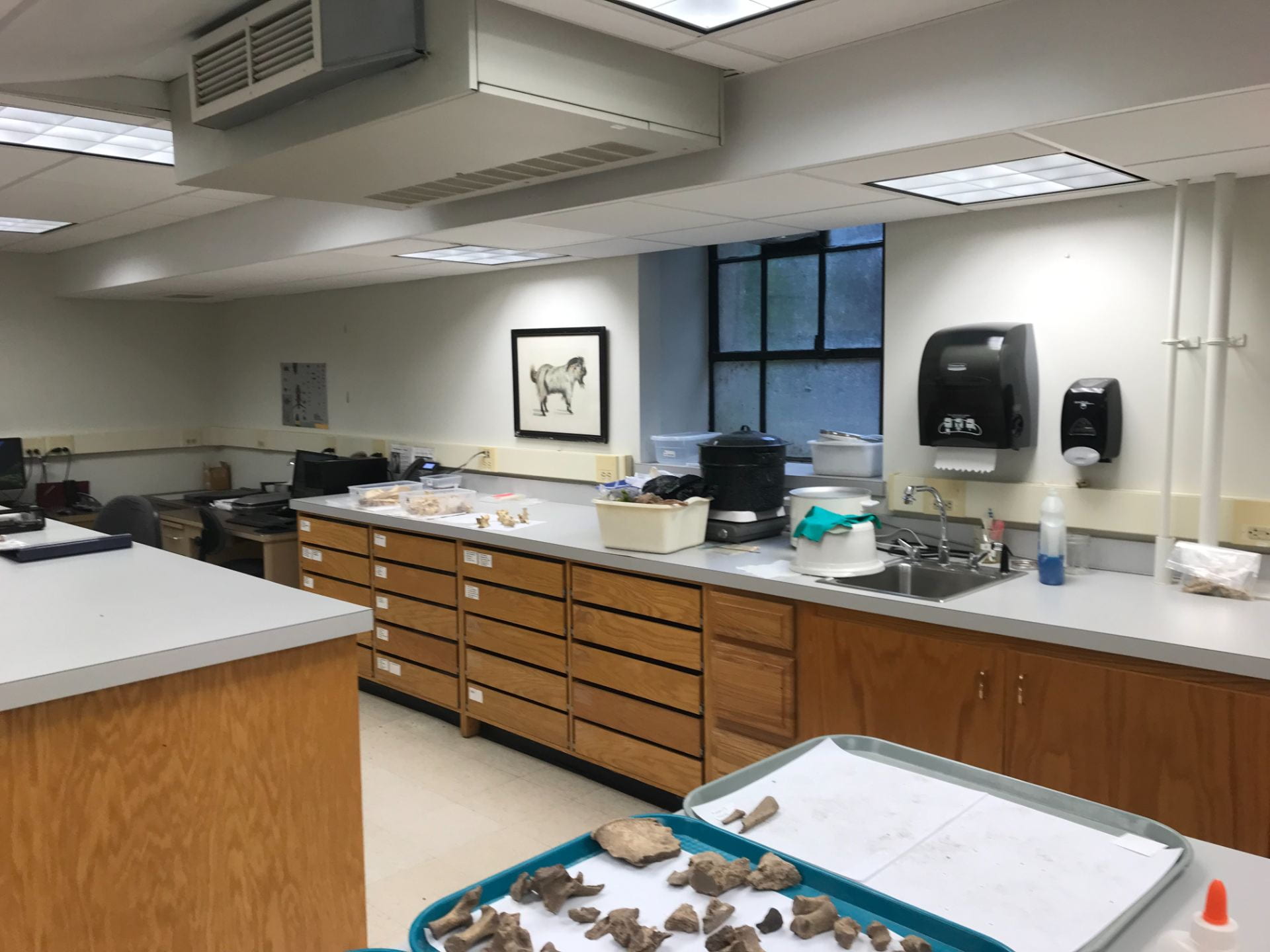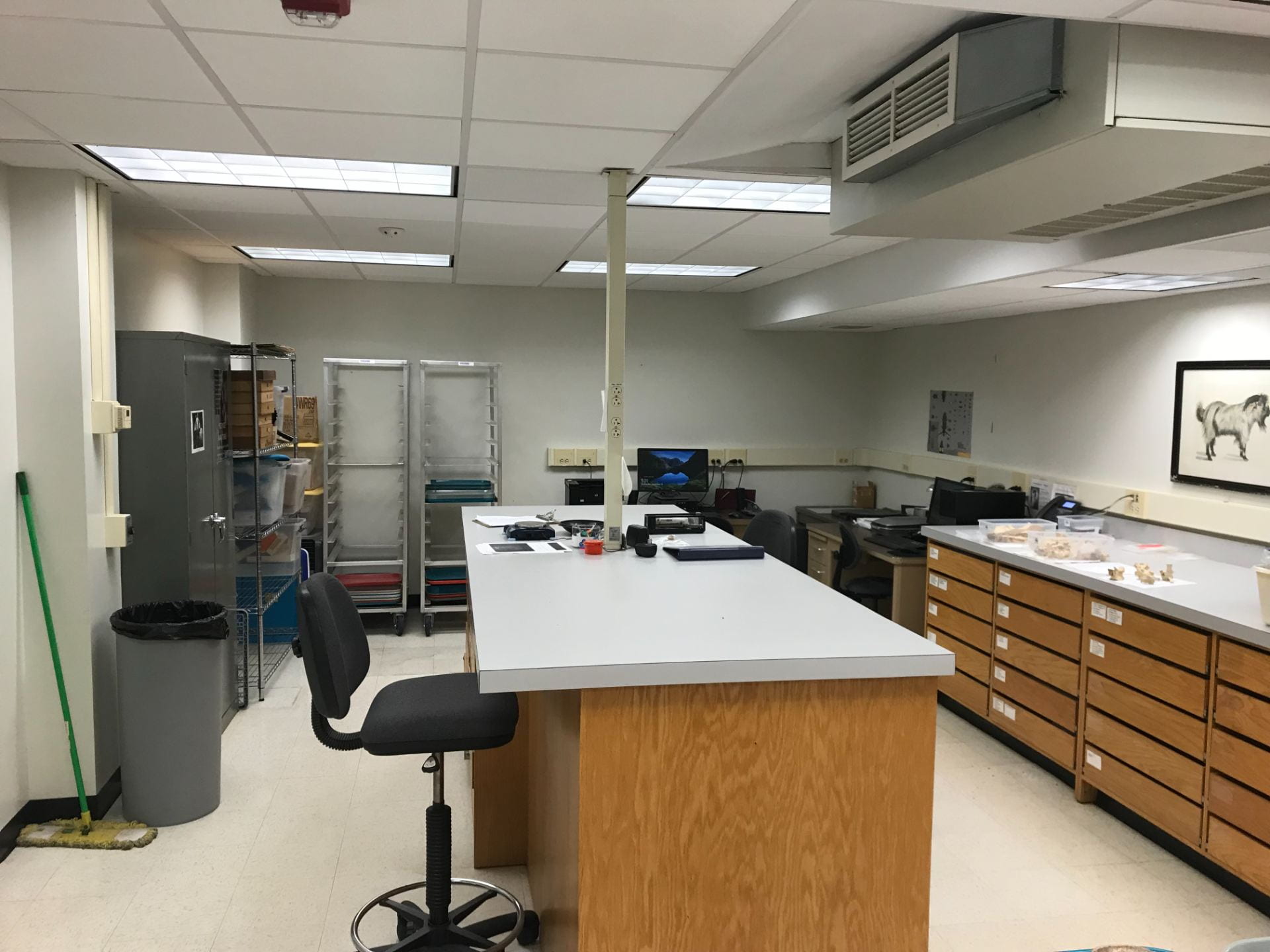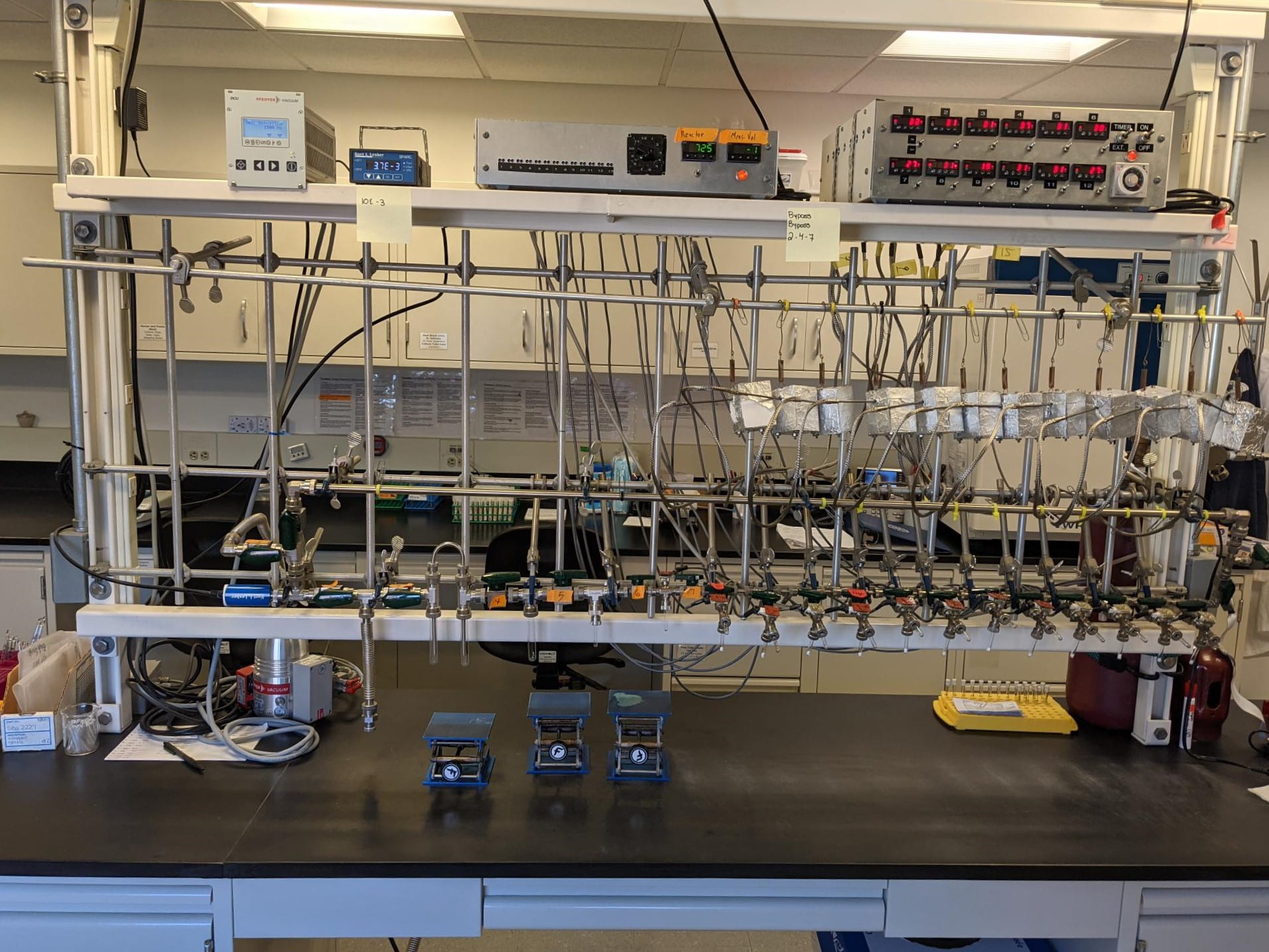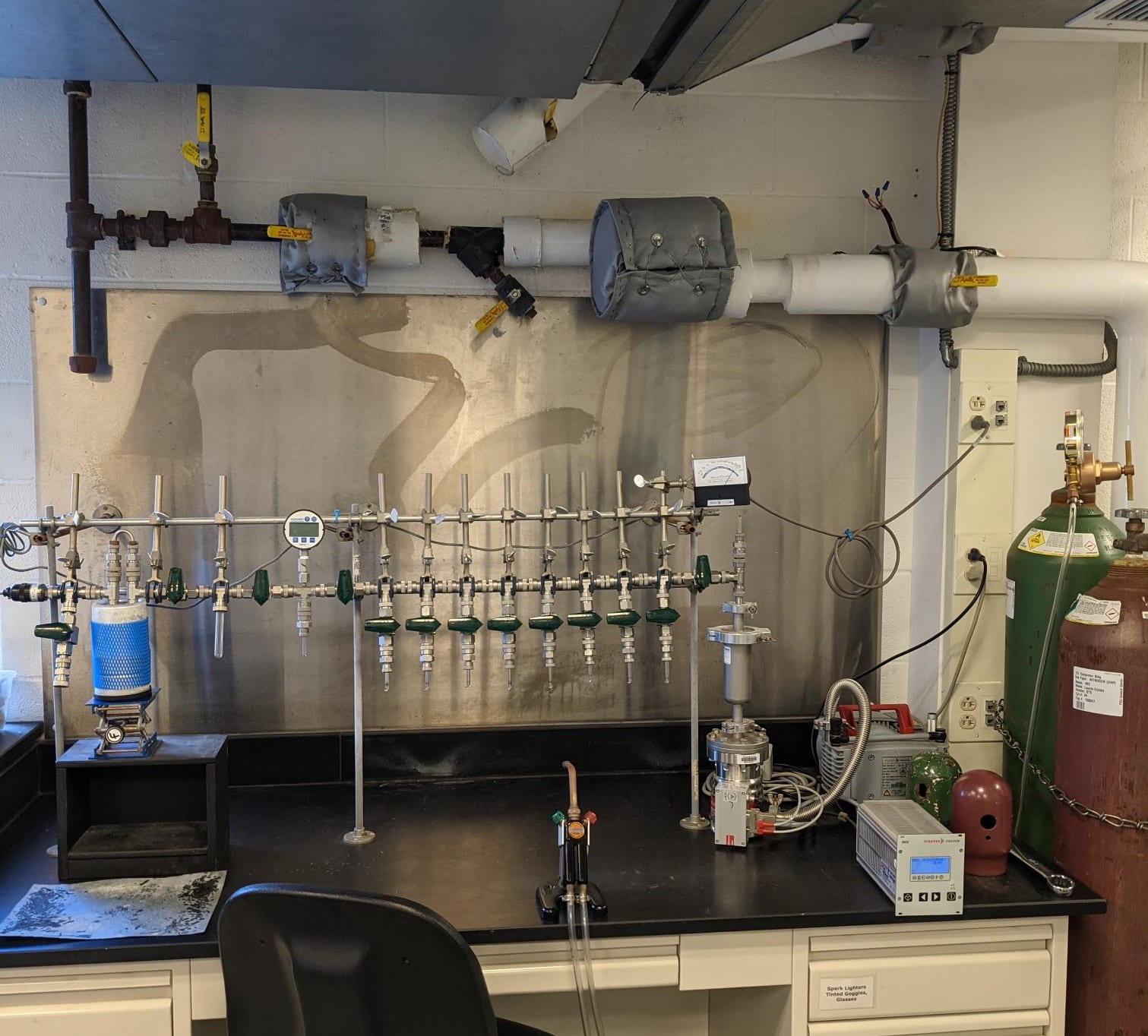As part of our active and ongoing research, the lab relies on the regular utilization of a number of research facilities and resources.
Environmental Archaeology Lab
The Environmental Archaeology Lab is in 315 Carpenter building. It is designed to promote archaeological research that explores the interactions between humans and the environment as well as cultural use and modification of plants and animals in the past. The facility is focused on promoting training and research in environmental archaeology for both undergraduate and graduate students. Presently, Dr. Alejandra Domic is using this facility for paleoethnobotanical purposes, including the identification of pollen, phytoliths, seeds, wood, and other archaeobotanical remains.
The lab is equipped for the microscopic (phytoliths, starch grains and pollen) and macroscopic (seeds, wood, charcoal) analysis of plant remains as well as animal remains (bone and shells). The lab facilities include a binocular stereoscope that has a camera attachment with measurement imaging software. It is also equipped with a microscope, binocular stereoscopes (6-40x), and a tree-ring measuring system.
Microscope and Other 315 Carpenter Resources
Zooarchaeology Lab
The Zooarchaeology Lab is in the basement of the Pond Laboratory building. The lab is focused on understanding past human-animal interactions through the analysis of animal remains. The lab facility maintains and is expanding a collection of dozens of vertebrate comparative specimens, including mammals, reptiles, and birds found in northeastern North America as well as some common domesticated species. It also includes a research and teaching space for undergraduate and graduate students and basic analysis equipment such as digital scales, digital calipers, and identification reference guides.
Bone Samples in Pond Lab
Human Paleoecology and Isotope Geochemistry Lab
The Human Paleoecology and Isotope Geochemistry Lab is in 403 Carpenter building. Laurie Eccles oversees day-to-day research and methods development in the lab for radiocarbon (14C) and stable isotope preparation of archaeological materials. The lab is open for any graduate or undergraduate student interested in learning how to process samples for these analyses.
The lab includes both dry and wet-lab areas for sample storage and preparation with standard laboratory equipment including a fume hood, Barnstead NanoPure water purifier, drying oven, freezer, freeze-dry lyophilizer and balances. Samples for AMS radiocarbon dating are prepared, combusted to CO2 gas, and converted to graphite in the lab. Key equipment for radiocarbon sample prep includes Hettich Rotofix centrifuge, Virtis lyophilizer, Barnstead programmable muffle furnace, a vacuum line for sealing radiocarbon samples prior to combustion, and a 12-port graphitization line for hydrogen-reduction of graphite on iron powder catalysts. The lines are made with Swagelok Ultra-Torr fittings on stainless steel drawn by oil-free Pfeiffer turbo pumps, and have been modeled on lines in use at KCCAMS at the University of California, Irvine. The lab has been swiped for the presence of radiocarbon tracer and maintains constant quality controls on radiocarbon processing through use of international and internal known-age lab standards (e.g., OX-1, OX2, Prophet River Wood, Beaufort Whale, FIRI secondaries). AMS 14C measurements are made on a National Electrostatics Corporation 500kV 1.5SDH-1 Compact Accelerator Mass Spectrometer at the AMS Radiocarbon Laboratory of the Energy and Environmental Sustainability Laboratories (EESL) at Penn State.
#1: 12-Port Graphitization and #2 Vacuum Line


